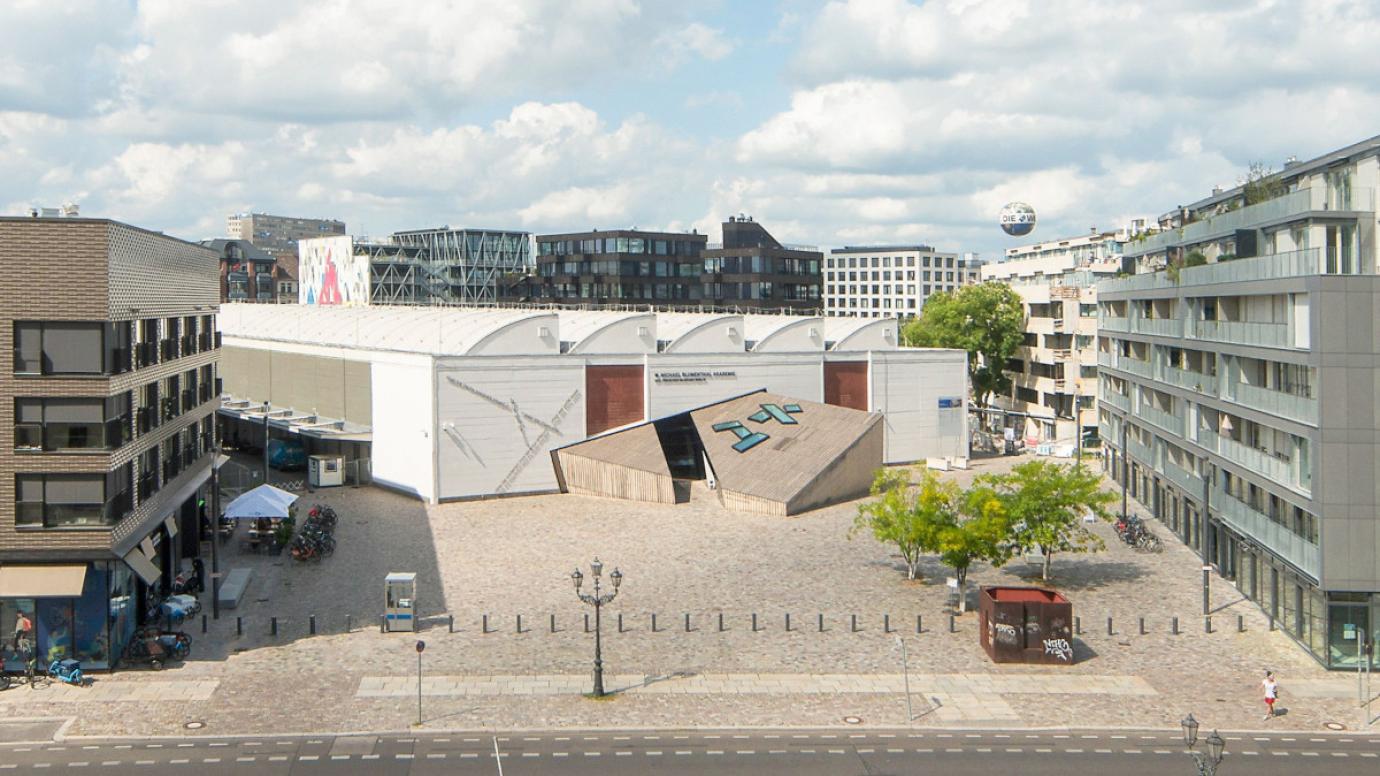Berlin: social mix in the Blumengroßmarkt neighbourhood
Bridging Cultures: Berlin's creative quarter transformation.
- Country:
-
 Germany
Germany
- Type of project :
- Urban regeneration
- Size of city/region:
- Above 1 million inhabitants

Key facts
Architecture studios: bfstudio-architects with Benita Braun-Feldweg/Matthias Muffert; ARGE ifau, Heide & von Beckerath architects; Deadline architects, Griffin Jürgens GbR; urban design study: bbzl böhm benfer zahiri landschaften städtebau
Main sponsor: Berlin Federal State (Senate Department for Urban Development, Building and Housing) and German national Government
Year completed: 2018
Total area: 13 000 m2
Prizes:
- German Urban Development Award 2020
- Berlin Award 2021
- Metropolenhaus: Deutscher Bauherrenpreis 2020
- FIABCI Prix d’Excellence Germany 2019
- the German Design Award 2020
- German Housing Award 2020
City / regional background
A wasteland around the Jewish Academy in the former Blumengroßmarkt (flower market) in the centre of Berlin offered the opportunity to transform a socially stigmatised neighbourhood into a more diverse urban area. The transformation followed the ideal of the mixed city facilitating the coexistence of different actors and using a co-creative approach.
The project faced challenges specific to the area, including its location as an inner-city peripheral zone stemming from the history of the former Berlin Wall. Navigating the urban landscape was further complicated by a juxtaposition of planning regulations and architectural laissez-faire.
Moreover, the area experienced urban development disruptions alongside the coexistence of parallel communities, with museums, cultural institutions, and educational entities on one side, and a predominantly migrant population on the other.
The area was also socially precarious, having a high proportion of people with a migrant background (about 70%), coupled with lower levels of education and income.
Solution
In a collaborative effort, in 2010 the local community and the district formulated a strategic urban development concept titled "Art and Creative Quarter" (KuKQ). The aim was to integrate Berlin's flourishing new creative community into a neighbourhood where migrant population live, without triggering social conflicts, displacement, or gentrification. The city devised a plan to transform the former flower market site into a liveable neighbourhood. It launched a development concept competition focusing on shared spaces for social interaction, mixed uses, and new building typologies.
The winners of the competition were three co-investing groups with cooperative, social, and cultural missions Together they founded the project group PxB to develop the site, working closely with the district and Berlin Senate.
Today, the flower market hall is framed by attractive architecture with mixed programmes and welcoming public spaces. Three new buildings contain flats, ateliers, commercial spaces, shared workspaces, offices, workshops spaces, seminar rooms, guest accommodation, a summer kitchen, an event space, a gallery, a café, shops, and a restaurant. Some of the spaces are used by social organisations as owners and tenants with reduced rent or for free.
Criteria for high-quality (context, sense of place, diversity, beauty)
-
The project is an example of smart cooperation between municipal stakeholders, private investors selected according to public interest criteria, and local citizens. Together they managed a co-creative and inclusive planning and implementation process.
-
PxB, the Berlin Senate and the district created cooperation instruments: a site development contract committing PxB to fund interim projects, youth empowerment, citizen participation, and events; a qualification process with four workshops on urban design, commerce/ open space, architecture, and neighbourhood integration; an advisory board for urban planning and architectural issues.
-
By offering space for inclusive housing, temporary project, cultural and educational activities, Blumengroßmarkt targets young people, people with migrant backgrounds, elderly people, and unemployed people.
-
The Feldfünf cultural platform manages the community spaces on the ground floor of the Metropolenhaus building where the community curates a dialogue between art, design, and everyday life.
Governance and management
One person from each organisation: district Friedrichshain-Kreuzberg, Berliner Großmarkt GmbH, Foundation Jewish Museum Berlin, Senate Department for Urban Development, Building and Housing.
About 8 persons are needed for the management of the cultural platform, (around 1.5 full time equivalents plus voluntary work).
Budget and financing
-
€75 million in private funds to construct the 3 buildings. This is the largest cooperative urban development project in Germany to date by financial volume.
-
€4,240,000 for the redesign and transformation of the open spaces, streets, of the Bessel Park and of Enckestreet through joint national-regional-municipal programmes for “Urban Heritage Protection”, “Vibrant Centres and Neighbourhoods” and “Future for Urban Green”.
-
€90,000 from the PxB group for citizen engagement, activation, and events.
-
€60,000 per year from Metropolenhaus Groundfloor Society for the cultural management staff of Feldfünf.
Transferable ideas
The project highlights several key lessons:
-
Displacement and gentrification can be avoided through a concept-driven, stakeholder-involved approach, even with private funding.
-
Common good-oriented financial models, and co-financing, can sustain non-commercial spaces for social and cultural purposes.
-
Effective cooperative urban development relies on collaboration and a shared vision, integrating top-down and bottom-up processes.
3 tips from the city:
-
When a public real estate property is listed for sale, seek authorisation to oversee the investor selection process according to common interest aspects on a relevant degree.
-
Prepare a strategic framework encouraging socially and functionally mixed-used public and private spaces. Allocate winners of competitions based on best development concept, rather than lowest price.
-
Work with the people, institutions and associations that are already there. They know the place, the people, and the challenges.
Contact information
Contact the Senate Department for Urban Development, Building and Housing via email.


